Open Toe vs Closed Toe Compression Stockings: How to Choose?
You may be wondering, what is the difference between open toe and closed toe compression socks? In a recent post, we discussed why some compression socks have open toes, and how they compare to compression sleeves for graduated compression. If you have challenges with swelling, discomfort, or pain in your legs, you should consider compression socks or stockings of either the open or closed toe variety. There are great benefits for open toe compression socks or stockings. Scientific and medical research has shown that graduated compression socks can:
- Improve blood flow in the lower legs by ~ 24%
- Reduce swelling and increase your comfort if you stand all day at work
- Prevent blood clots, pulmonary embolism, or deep vein thrombosis from sitting all day (especially if you are traveling by plane)
- Reduce painful symptoms of varicose veins
- Help you have up to 63% less inflammation in your legs (as measured by IL-6)
- Improve exercise performance and reduce recovery times
In this blog, you will learn why you might choose to wear open toe compression socks instead of closed toe socks as well as any functional differences between them.
What is the Difference Between Open Toe vs Closed Toe Compression Stockings?
Besides the obvious hole in the toe, there are a couple of differences between open toe compression socks and closed toe variety.
First, I want to start off by discussing how compression socks or stockings work and the benefits of wearing them. Compression socks are knee high garments that gently squeeze the lower leg to prevent blood and other fluids from pooling in the feet and ankles. Compression stockings work the same way but go all the way up to your waist. Compression garments use graduated compression to guide blood safely back up to the heart. When you see “graduated compression” it means that the piece of compression wear is tightest around the ankle and lower leg and gets less tight as it moves up the leg. This prevents blood pooling and swelling in the ankle and legs by helping the veins push blood back to the heart. One scientific study found that graduated compression socks improve blood flow by about 24%.
When it comes to gradual compression, open toe and closed toe compression socks or stockings function the same. This is because the toe box does not provide the therapeutic compression that the part around your legs does.
When to Wear Open Toe Compression Socks
Open toe compression socks or stockings can be comfortably worn year-round, but they are mostly used during the warmer months. Many individuals who wear compression socks for medical reasons must wear them year-round, for many hours a day. As you can imagine, that might get uncomfortable during the warmer months, especially if you are a runner.
Open toe compression socks or stockings not only allow for the feet and toes to breathe while you benefit from compression, but they also allow for sandals and flip-flops to be easily worn. When worn with jeans or a long skirt, open toe compression socks allow for a more discreet option for therapeutic compression during summer. Our open toe compression socks are made with lightweight fabric to make them most suitable and comfortable for those warmer months.
When to Wear Closed Toe Compression Socks
Closed toe compression socks can be worn year-round, and they are the most found form of compression garment. Compression socks can come in a variety of fabrics and patterns. Our compression socks come in cotton, merino wool, nylon, and moisture wick nylon. This makes it easier to wear them year-round no matter what the activity or season.

How to Choose Between Open Toe vs Closed Toe Compression Socks
Choosing between open toe and closed toe compression socks comes down to the activity and your own comfortability. We recommend assessing your personal preferences, how hot your feet get normally, foot width, toe spread, and your given activity.
Personal Preference
If you have found yourself cursing the seams in the toes of socks, or if you prefer to have your toes be free, then open toe compression socks may be for you. Open toe compression socks are great for people who may have sensory issues around their toes.
“New Legs & Feet! Love these socks for how they take the stress off my legs and feet. The seamless toe is great …..no more under toe irritation. Wish more of your socks had that feature. Needless to say all your socks are so colorful and pretty. Very pleased! Thank you for the great products.”
- Nancy B Wilborn
Foot Sweating and Hot Weather
Many people prefer open toe compression socks vs closed toe compression socks if they find that their feet get sweaty throughout the day. Open toe compression socks allow for more ventilation than closed toe compression socks, making them easier to wear in warmer and humid conditions. Open toe compression socks also allow for shoe choices, such as flip flops and other sandals. This makes it easier to let your feet breathe throughout the day.
Toe Conditions
If you find yourself with athlete’s foot and other infections because of excess moisture in your sock, open toe compression socks will help your feet air out and stay dry while providing you with the therapeutic compression you need. Bunions, ingrown toenails, and sores are also causes for discomfort that could be helped by wearing open toe compression socks.
Large Feet and Toes
Many people do not like compression socks with a closed toe because they have wider feet and toes, and the toe box of the sock constricts their foot uncomfortably. If you wear wide shoes and have found it difficult to wear socks for extended periods, then open toe compression socks may be for you.
Travel and Leisure Time
Compression socks are a great travel tool to keep your legs feeling refreshed on the way to your destination. Medical research has found that compression socks or stockings also help prevent DVT and other blood clot related risks that come with travel. Depending on the location of your trip, you may opt for closed toe or open toe socks. If you are hiking and wearing boots, our closed toe merino wool compression socks are for you.
Sitting or Standing All Day
If you are sitting or standing all day, compression is a great idea to prevent blood clots and sluggish and swollen legs. Whether you are a hairdresser, nurse, surgeon, teacher, or construction worker, closed toe compression socks are great for standing all day because they can more easily be worn with a good pair of running shoes, which can also save your legs. One study found that people that wear compression socks at work report a better quality of life and fewer symptoms of pain and discomfort in the lower legs, especially if you have problems with swelling or edema.
If you are recovering from surgery and laying down all day, many doctors like open toe compression socks for surgery recovery because they are easier to get on and off. Some people also prefer wearing open toe compression socks to bed if they wear compression socks 24 hours a day.
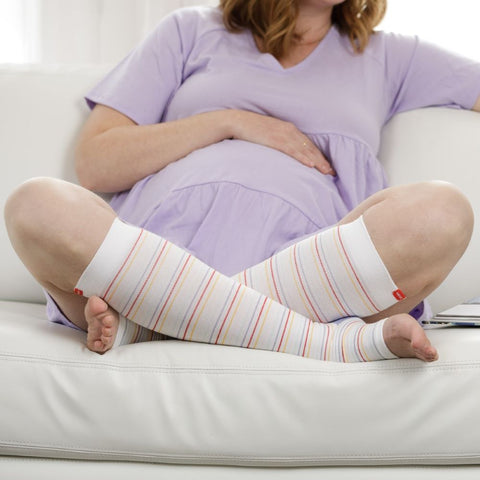
Finding Best Open Toe and Closed Toe Compression Socks for You
Now that you have decided to try some open toe compression socks, you want to make sure that you get the best open toe compression socks. We recommend looking for style, material, size and strength to help you find your perfect open toe compression socks.
Style
Compression socks are not known for being stylish, that is until VIM & VIGR came on the stage. We are committed to designing stylish compression legwear that you want to wear. We have stylish designs for both open and closed toe compression socks, and we release new styles every season to keep you looking your best. When you like how your compression socks look, you are much more likely to wear them.
Material
We have four unique fabrics that we use to create our compression socks. So far, our open toe compression socks have been created using our cotton and choice nylon fabrics. This is completely intentional, because we wanted the most breathable fabrics for our open toe compression socks. We figured these socks will be worn in warm weather, and breathable fabric will just make them even more comfortable! Our closed toe compression socks also come in these breathable fabrics along with others like merino wool, which is antibacterial, so you can have a compression sock for every season! Worried about the upkeep of your compression socks? Check out our guide for washing compression socks, no matter the material!
Strength
Our compression socks come in 15-20 mmHg, 20-30 mmHg, and 30-40 mmHg. You can read more on compression levels and what they mean here, but compression socks should be tight and supportive, yet still comfortable. Like a supportive hug for your legs.
- 15-20 mmHg: Light support that is ideal for all-day, everyday wear. Great for travel, mild to moderate edema, pregnancy, achiness, spider and varicose veins.
- 20-30 mmHg: Moderate to firm support that is commonly recommended for edema, Deep Vein Thrombosis (DVT), lymphedema, pre- and post-surgical applications and moderate varicose veins.
- 30-40 mmHg: Firm support that usually comes as a prescription from a doctor, used for treating conditions such as venous insufficiency, DVT, lymphedema and dysautonomia.
Right now, our open toe compression socks come in 20-30 mmHg, but we are working to expand that offering into other levels.
Size
Compression socks are not “one size fits all.” Everyone is different, and we try our best to accommodate these wonderful differences. That is why we offer 6 different sizes for our compression socks including wide calf options for people with larger calves.
Measuring your size is easy and will ensure that you get the most comfortable socks or stockings possible. For more guidance on size, make sure to visit our size guide and we will help you find your perfect compression sock!
Hopefully by now, you know if you want open or closed toe compression socks – or both! Both are great options and effectively alleviate swollen legs and other discomforts while still looking stylish. If you are still on the fence, feel free to reach out to us on social media and we will happily pair you with your perfect sock!
Shop for stylish compression socks online at Vim & Vigr.
References
Charles, T., Mackintosh, D., Healy, B., Perrin, K., Weatherall, M., & Beasley, R. (2011). Merino wool graduated compression stocking increases lower limb venous blood flow: a randomized controlled trial. Advances in therapy, 28(3), 227–237. Read it here.
Partsch, H., Winiger, J., & Lun, B. (2004). Compression stockings reduce occupational leg swelling. Dermatologic surgery : official publication for American Society for Dermatologic Surgery [et al.], 30(5), 737–743. Read it here.
Clarke, M. J., Broderick, C., Hopewell, S., Juszczak, E., & Eisinga, A. (2021). Compression stockings for preventing deep vein thrombosis in airline passengers. The Cochrane database of systematic reviews, 4(4), CD004002. Read it here.
Moñux, G., Serna-Soto, M., Plá-Sanchez, F., Zamorano-León, J. J., Segura, A., Rial, R., Freixer, G., Zekri-Nechar, K., Hugo-Martínez, C., Serrano, J., & López-Farré, A. (2021). Compression stockings attenuate the expression of proteins associated with vascular damage in human varicose veins. Journal of vascular surgery. Venous and lymphatic disorders, 9(2), 428–434. Read it here.
Armstrong, S. A., Till, E. S., Maloney, S. R., & Harris, G. A. (2015). Compression socks and functional recovery following marathon running: a randomized controlled trial. Journal of strength and conditioning research, 29(2), 528–533. Read it here.
Miller A. (2017). Impact of seamless compression garments on limb functionality, comfort and quality of life. British journal of community nursing, 22(Sup10), S26–S37. Read it here.
Ivankovic, T., Rajic, A., Ercegovic Razic, S., Rolland du Roscoat, S., & Skenderi, Z. (2022). Antibacterial Properties of Non-Modified Wool, Determined and Discussed in Relation to ISO 20645:2004 Standard. Molecules (Basel, Switzerland), 27(6), 1876. Read it here.









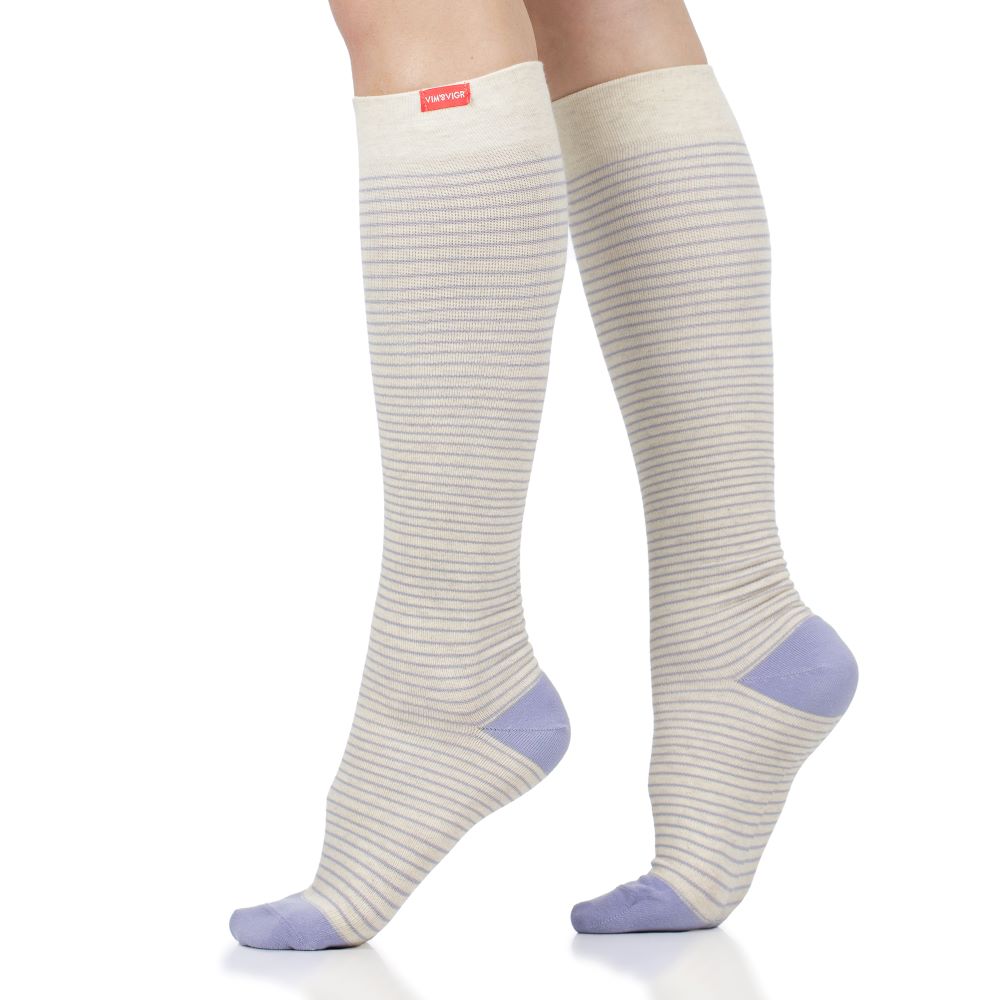
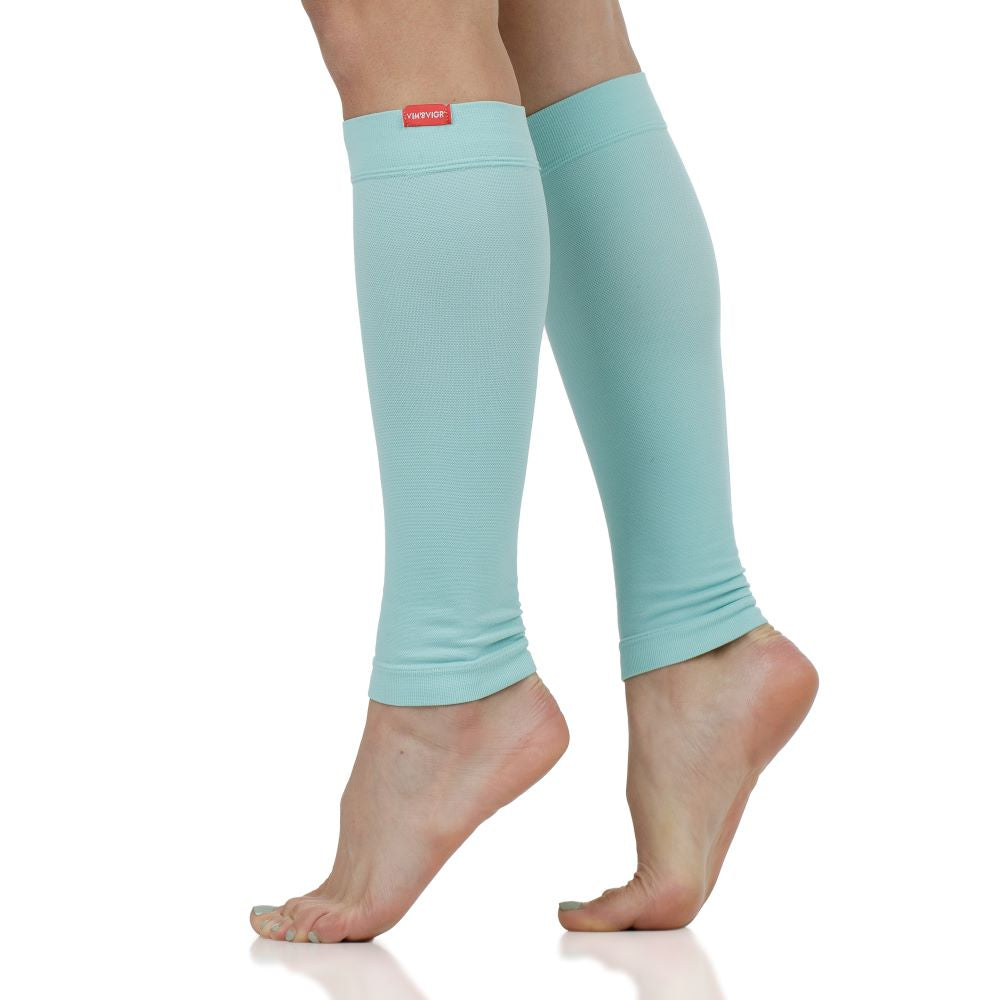
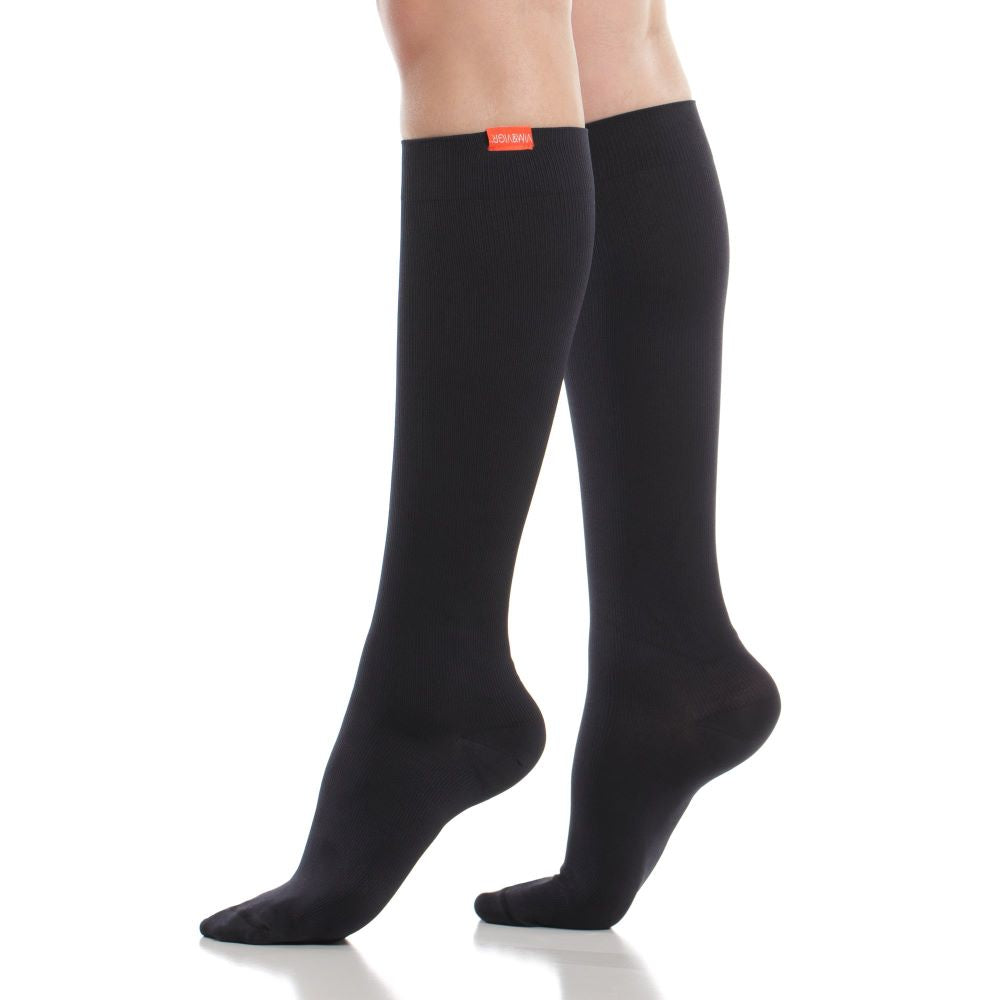
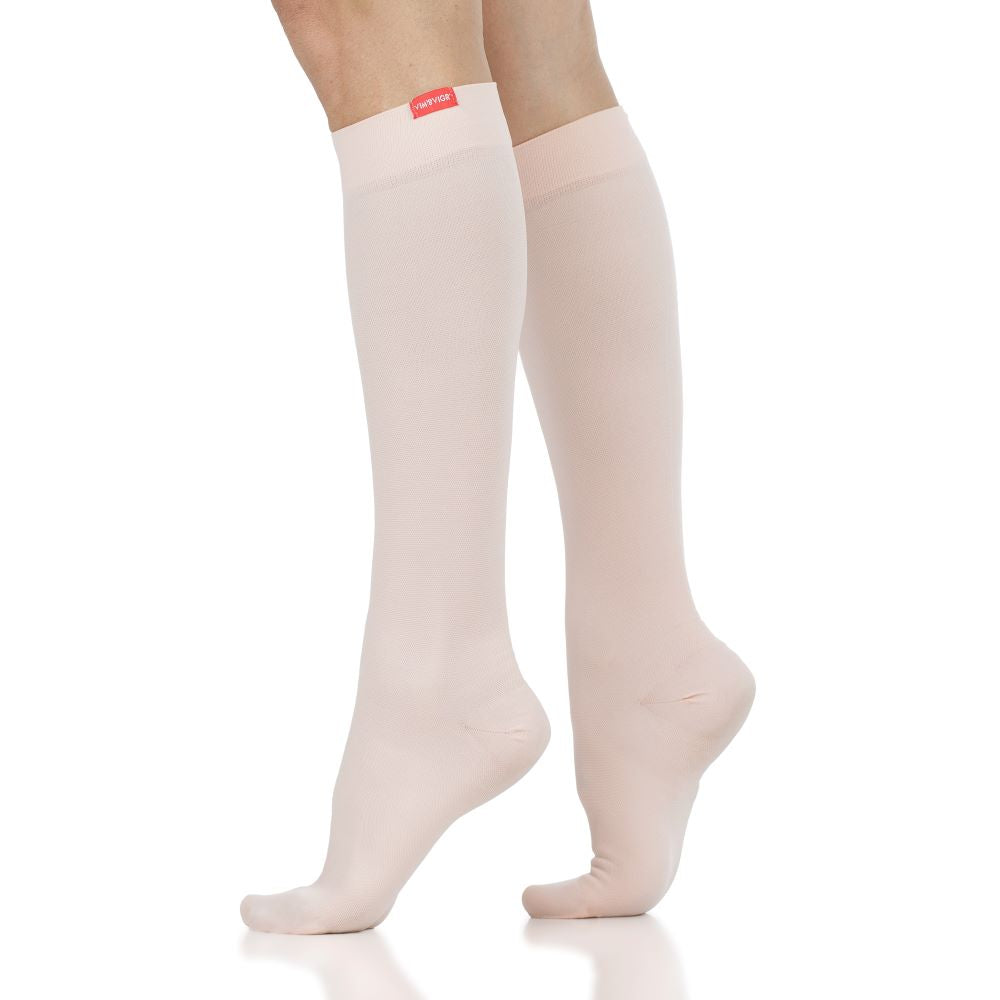






I would like to thank you everything was very helpful have a great day and God bless
Leave a comment